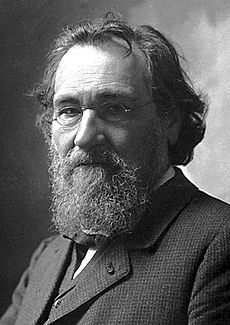Immune system facts for kids

The immune system is the set of tissues which work together to resist infections. It's like your body's amazing defense team whose job is to protect you from tiny invaders, like germs (bacteria and viruses), that can make you sick. It's a complex network of cells, tissues, and organs that work together constantly, 24 hours a day, 7 days a week, to keep you healthy. Think of it as your personal, invisible shield and army!
Contents
Why is it important?

Without a working immune system, your body would have no way to fight off the germs that are all around us. Even simple things like a common cold could become very serious. Your immune system helps you get better when you do get sick and often prevents you from getting sick from the same germ again.
How does the immune system work?
The immune system works by recognizing things that are not supposed to be in your body, called antigens. These antigens are usually found on the surface of germs. Once an antigen is spotted, the immune system swings into action to get rid of the invader. It has different ways of doing this:
- Finding the invaders
Special cells patrol your body, looking for anything that looks suspicious or foreign.
- Attacking the invaders
When an invader is found, the immune system sends out its "soldiers" (different types of cells and special proteins) to attack and destroy the germ.
- Remembering the invaders
One of the coolest things the immune system does is remember the germs it has fought before. If the same germ tries to invade again, the immune system can recognize it quickly and fight it off faster and stronger, often before you even feel sick. This is called immunity!
Parts of the immune system
The immune system isn't just one thing; it's made up of many different parts working together. Some of the main players include:
- White Blood Cells (Leukocytes): These are the main soldiers of your immune system. They are made in your bone marrow and travel throughout your body in your blood and lymphatic system. There are different types of white blood cells, each with a special job:
- Phagocytes: These cells are like the "clean-up crew." They "chew up" and swallow invading germs and damaged cells. Neutrophils and Macrophages are types of phagocytes. Macrophages are also important for helping the body heal.
- Lymphocytes: These cells help your body remember invaders and destroy them. The two main types are B cells and T cells.
- B Cells (B Lymphocytes): These are like the "intelligence system." They find targets (germs) and make special Y-shaped proteins called antibodies.
- T Cells (T Lymphocytes): These are like the "soldiers" or "killer cells." Some T cells help the B cells make antibodies (Helper T cells), while others directly destroy cells in your body that have been infected by germs (Killer T cells). Memory cells, which remember past invaders, are also a type of lymphocyte.
- Antibodies: These are the special proteins made by B cells. They are shaped like a "Y" and can stick to specific antigens on germs. When antibodies stick to a germ, it can neutralize the germ (make it harmless) or mark it so that other immune cells know to destroy it.
- Organs of the Immune System (Lymphoid Organs): These are places in your body where immune cells are made, grow, and are stored.
- Bone Marrow: This is the soft, spongy tissue inside your bones. It's like the "police academy" where all blood cells, including white blood cells, are born from special stem cells.
- Thymus: This is a small organ located in your chest, behind your breastbone. T cells travel from the bone marrow to the thymus to finish growing up and become ready to fight.
- Lymph Nodes: These are small, bean-shaped organs found all over your body, connected by tiny tubes called lymphatic vessels. They are like "checkpoints" or "filtering stations" where germs and damaged cells are collected from the body's tissues and where immune cells can gather to fight infections. You might feel your lymph nodes swell in your neck, armpits, or groin when you are sick – this is a sign they are working hard!
- Spleen: This organ is located in your belly. It filters blood, removes old or damaged red blood cells, and also contains lots of white blood cells that can fight infection.
- Adenoids and Tonsils: These are located in your nose and throat area. They are like early warning stations, trapping germs that enter through your nose and mouth.
- Peyer's Patches: These are small areas of lymphoid tissue in your small intestine that help protect against germs entering through the food you eat.
- Skin: Your skin is actually your body's very first line of defense! It acts like a physical barrier, blocking many germs from even getting inside your body. This is why keeping your skin clean is so important.
- Mucous Membranes: These are the moist linings inside your nose, mouth, throat, and other parts of your body. They produce sticky mucus that can trap germs, and they also contain immune cells.
Types of immunity
Innate Immunity
This is the protection you are born with. It's like your body's built-in, general defense system. Your skin, mucous membranes, and some types of white blood cells (like phagocytes) are part of your innate immunity. This system reacts quickly to any invader it sees as foreign.
Adaptive Immunity
This type of immunity develops over your lifetime. It's like your body learning and adapting to fight specific germs. When your body is exposed to a germ, your adaptive immune system (especially B cells and T cells) learns to recognize that specific germ and creates a targeted response. This is where antibodies and memory cells come in. Adaptive immunity is why you usually only get diseases like chickenpox once.
Passive Immunity
This is when you "borrow" immunity from another source, and it usually lasts for a short time. A good example is when a baby gets antibodies from their mother through breast milk, which gives the baby temporary protection against some diseases the mother is immune to.
What happens when the immune system doesn't work right?
Sometimes, the immune system can have problems.
- Allergies: This happens when the immune system overreacts to something that is usually harmless, like pollen, certain foods, or pet dander. The immune system mistakes these things for dangerous invaders and launches an attack, causing symptoms like sneezing, itching, or a rash.
- Autoimmune Diseases: In rare cases, the immune system can get confused and mistakenly attack your body's own healthy cells and tissues. This is like your own soldiers attacking your own team. Examples include conditions where the immune system affects joints or other body parts. Scientists are still learning a lot about why this happens.
- Immunodeficiency: This is when the immune system is not strong enough to fight off infections properly. This can be something a person is born with or can happen later in life. People with immunodeficiency might get sick more often or have a harder time recovering from illnesses.
History
People have known for a long time that if you recovered from certain diseases, you often didn't get them again. This was an early observation about immunity, even before anyone knew about germs or the immune system. As early as the 1400s or 1500s, people in some parts of the world practiced something called variolation to try and prevent smallpox by exposing healthy people to material from someone with a mild case.
In the late 1700s, Edward Jenner noticed that milkmaids who got a mild disease called cowpox didn't get smallpox, which was a very dangerous disease. In 1796, he tested this idea by giving a young boy named James Phipps cowpox material. When he later exposed James to smallpox, James didn't get sick. This was the first successful vaccination, and the word "vaccine" comes from the Latin word for cow, "vacca."
Later, in the 1800s, scientists like Louis Pasteur made huge steps in understanding that tiny microbes cause diseases (the germ theory) and developed more vaccines, like for rabies. In the late 1800s and early 1900s, scientists started discovering more about the specific parts of the immune system, like antibodies (first called "antitoxin" by Emil von Behring and Shibasaburo Kitasato in 1890, and the term "antibody" was coined by Paul Ehrlich in 1897) and different types of immune cells. More recently, in 1968, scientists like Jacques Miller and Graham Mitchell made important discoveries about how different immune cells, like T cells and B cells, work together.
Keeping your immune system strong
You can help your amazing immune system do its job by taking good care of yourself!
- Eat Healthy Foods: Eating a balanced diet with lots of fruits and vegetables gives your body the nutrients it needs to build strong immune cells.
- Get Enough Sleep: When you sleep, your body repairs itself and makes important immune cells.
- Exercise Regularly: Being active helps your blood circulate, which helps immune cells travel throughout your body.
- Wash Your Hands: This is one of the simplest and best ways to stop germs from getting into your body in the first place.
- Get Vaccinations: Vaccinations (or immunizations) are like training for your immune system. They introduce a tiny, safe part of a germ (or a weakened version) to your body. Your immune system learns to recognize it and build antibodies and memory cells, so if you ever encounter the real germ, your body is ready to fight it off quickly and prevent you from getting seriously sick.
Images for kids
-
Joints of a hand swollen and deformed by rheumatoid arthritis, an autoimmune disorder
-
Paul Ehrlich (1854–1915) was awarded a Nobel Prize in 1908 for his contributions to immunology.
See also
 In Spanish: Sistema inmunitario para niños
In Spanish: Sistema inmunitario para niños






